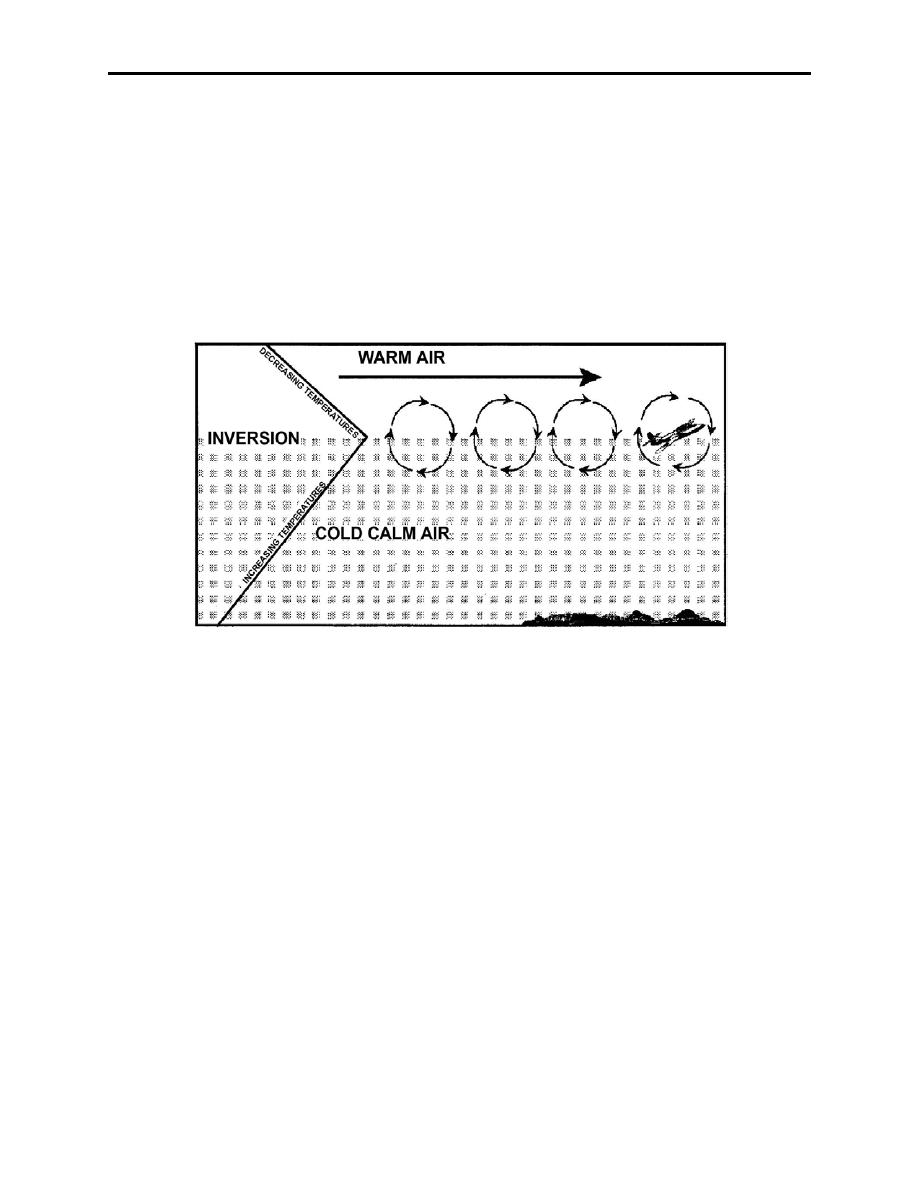 |
|||
|
|
|||
|
Page Title:
Turbulence Associated with Thunderstorms |
|
||
| ||||||||||
|
|  AVIATION WEATHER
CHAPTER FIVE
on clear, cool nights when the winds are light and the air is stable. If the winds just above the
inversion grow relatively strong, wind shear turbulence can result.
Figure 5-7 shows a wind shear zone and the turbulence that developed between the calm air and
stronger winds above the inversion. When taking off or landing in near-calm surface winds under
clear skies within a few hours of sunrise, watch for a temperature inversion near the surface. If
the wind at 2000 to 4000 feet AGL is 25 knots or more, expect a shear zone at the inversion. To
prepare yourself, allow a margin of airspeed above normal climb or approach speed if turbulence
or a sudden change in wind speed occurs in order to counteract the effects of a diminished
headwind or increased tailwind at and below the inversion.
Figure 5-8 Wind Shear Associated With a Temperature Inversion
Turbulence Associated with Thunderstorms
The strongest turbulence within cumulonimbus clouds occurs with the shear between the
updrafts and downdrafts. Outside the clouds, wind shear turbulence has been encountered
several thousand feet above and 20 miles laterally from a severe storm. Severe turbulence can be
encountered in the anvil 15 to 30 miles downwind. The storm cloud is only the visible portion of
a turbulent system whose updrafts and downdrafts often extend outside the storm.
Flight Techniques For Turbulence
If you cannot avoid flying in turbulence, recommend the following procedures:
1.
Establish and maintain thrust settings consistent with turbulent air penetration airspeed and
aircraft attitude. Severe turbulence may cause large and rapid variations in indicated airspeed.
Do not chase airspeed.
2.
Trim the aircraft for level flight at the recommended turbulent air penetration airspeed. Do
not change trim after the proper attitude has been established.
Weather Hazards of Turbulence, Icing, Ceilings, Visibility, and Ash Clouds
5-11
|
|
Privacy Statement - Press Release - Copyright Information. - Contact Us |